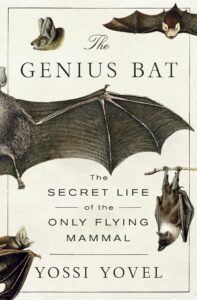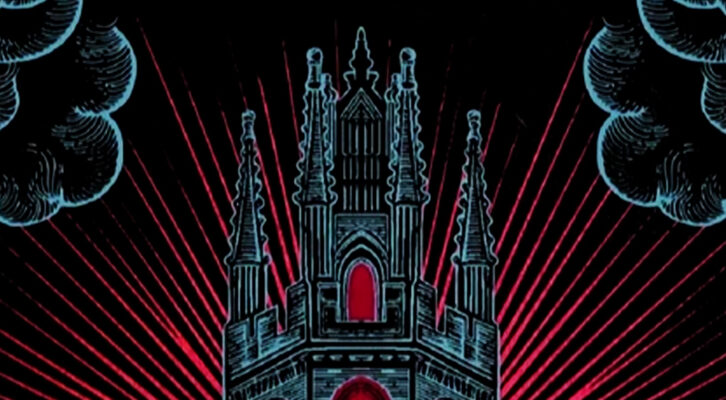
“We Call Them Vampires.” Studying Bats in the Jungles of Belize
Yossi Yovel Explores the Natural Habitat of a Blood Sucking Mammal
An open secret among nature researchers is that many of the wildest nature studies are conducted in close proximity to five-star resorts. After all, even the most daring explorers appreciate easy access to electricity and Wi-Fi and won’t say no to a hot shower at the end of a long day of work. One such “wild” research site, particularly popular among bat researchers, is the Lamanai Outpost Lodge in Belize, where dozens of researchers from around the world convene for an annual “bat-a-thon.” Lamanai Lodge is situated in a patch of tropical forest near the spectacular Lamanai Archeological Reserve, one of the largest sites of Mayan temples in Belize.
The Lodge is on the bank of the New River, and a refreshing dip in its clear water is a fitting finale after a day in the field. The river is swarming with crocodiles, but the hotel manager assures you that they’re small and their bite is nearly harmless. The food in Lamanai is excellent, and after some fresh scones, a guest can enjoy the Lodge’s famous Howler Monkey cocktail at the bar or, better yet, take the cocktail down to the bank of the river and record the echolocation sounds of the bats as they hunt above the water.
In 2012, I joined this yearly summer camp with the goal of studying bloodthirsty bats, aptly named “vampires.” I had never worked with vampires before but had read a lot about them and was curious to discover whether echolocation plays any role in their social communication. More specifically, I wanted to examine whether it helps them identify one another: Can a bat recognize another bat by the echo that bounces back from its face? The forests around Lamanai are full of bats, and I was told that I wouldn’t have any problem catching some. The Canadian researcher Brock Fenton, who organized this annual research camp, procured a big jar of cow blood from a nearby slaughterhouse so that we could feed the bats we caught; he advised me to put it in the minibar refrigerator in my hut to keep it from clotting. My roommate, a bat researcher from New Zealand, wondered what kind of jam the large jar in the fridge contained.
Most bats are pretty clumsy when they move on all fours, as they try to spread their wings and fly, but vampire bats are different.
Most bats are pretty clumsy when they move on all fours, as they try to spread their wings and fly, but vampire bats are different. Using their wings as two front limbs, they are as quick as mice. If I let one out of my grip, it would scurry up my arm and within seconds be running across the back of my neck. No, it wasn’t looking for my jugular vein; it was simply trying to get as far away from my hands as quickly as possible.
Together with one of my students who accompanied me, I spent many hours watching bats interact and recording their echolocation sounds in an effort to understand whether they use them for individual identification. We wondered whether bats that meet in the dark communicate by scanning each other with echolocation signals. As often in such preliminary research, the results were not clear enough for us to draw conclusions. However, I did have the dubious pleasure of spending my nights in the company of a female vampire: One evening, after cocktails, as I was feeding the vampires in my hut, one of them slipped my grip, scampered up to my shoulder, hopped to a nearby wall, and disappeared. I searched the hut for hours but to no avail. I finally had to retire to bed knowing that I might wake up with a perfectly round puncture hole in my face and a little less blood in my veins. My Kiwi colleague was even less pleased with our new roommate. He had gotten used to the crocodiles in the river but thought a vampire in bed was a little too much. We never found her. She might still be in that hut today, savoring the blood of scientists and tourists alike.
Bats are very social creatures, but their sociality comes in many forms. Some species dwell in huge colonies in caves, where millions of bats cram together. Some species dwell in hollowed-out tree trunks in small groups of fewer than twenty. Some species live alone in crevices. In certain species, male and female bats congregate separately, meeting with the other sex only to mate. And in other species, individuals sleep in a different place every night, each time choosing their roost-mates anew.
Harvard entomologist E. O.Wilson’s Sociobiology: The New Synthesis, published in 1975, revolutionized the way biologists researched social behavior, a subject hitherto reserved primarily for sociologists. Wilson tried to apply evolutionary principles to social behaviors that puzzled researchers, such as altruism. He sought to explain why a certain animal would choose to help another, since such behavior seems to contradict the basic evolutionary principle asserting that all animal behavior is solely aimed at propagating the individual’s genes.
Bats are very social creatures, but their sociality comes in many forms.
It’s hard to overstate the book’s influence. It sparked a lively debate between biologists and sociologists—mainly over the last chapter, which focuses on humans. Wilson’s book aroused such great interest that The New York Times ran a front-page review. One young biologist deeply influenced by Wilson’s book was Gerald S. Wilkinson, an undergraduate student when the book came out. Keenly interested in social behavior, he participated in a seminar on the book at the University of California, Davis. Wilkinson and his classmates learned how to conduct social research, observe a group of animals, and systematically document their interactions every ten minutes.
With Wilson’s book in mind, Wilkinson sought to pursue research on animal sociality. After a few failed attempts with birds, he decided to study nectar-eating bats (Glossophaga—long-tongued bats) to see if there was a connection between their social structure and the food in their environment. This was one of the main research subjects in social biology at the time: how the food supply affects a species’ social structure. One theory was that dependence on food that is difficult to come by will lead to congregation—that is, the formation of groups that collaborate to search for food. This remains one of the most popular explanations for the existence of cooperative groups in nature and, some would say, the basis for human collaboration, too.
At the time, nectar bats were too small to track with transmitters, so Wilkinson started marking individuals with fluorescent plastic rings. He then mapped their roosting places, which were usually inside hollow trees. While immersed in observing nectar bats in Costa Rica, Wilkinson received a letter from Jack Bradbury, now back in the US, that would change his life. Bradbury excitedly wrote that he had learned at a conference that vampire bats sometimes feed their pups with digested food, and maybe even feed other adult bats. That was all Wilkinson needed. Mutual feeding, mutual help, altruism, was the most fascinating subject in Wilson’s book. It was the biggest question: Why would one animal help another animal?
Vampire bats were common in Wilkinson’s research area, and he kept bumping into them inside hollow tree trunks while looking for nectar bats. He also began banding vampire bats with rings, and soon he discovered that they were much easier to work with than nectar bats, because they usually came back to the same spaces where they had been marked. Thus began a journey that is continuing today.
__________________________________

From The Genius Bat: The Secret Life of the Only Flying Mammal by Yossi Yovel. Copyright © 2025. Available from St. Martin’s Press, an imprint of St. Martin’s Publishing Group, a division of Macmillan.
Yossi Yovel
Yossi Yovel is an ecologist and a neurobiologist—a rare combination of disciplines. A professor at Tel-Aviv University and the head of the School of Neuroscience, he has conducted research all around the world, using an arsenal of methods and equipment. His work has been covered by major media outlets including The New York Times, The Guardian, The Financial Times, The Economist, NPR, BBC, and National Geographic. A sought-after public speaker, he is currently a visiting scholar at McGill University in Montreal.



















